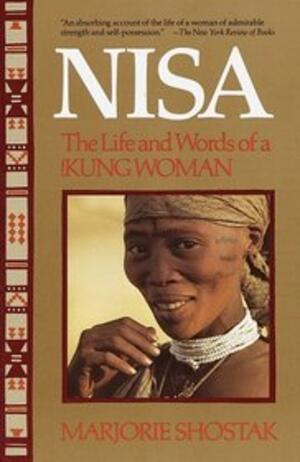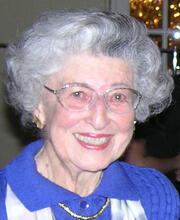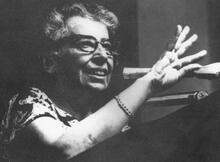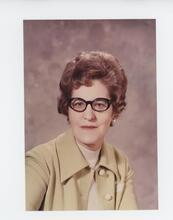Marjorie Shostak
Earning her bachelor’s degree in English literature from Brooklyn College in 1966, Marjorie Shostak traveled to Botswana with her husband for his doctoral research in 1969. In Africa, Shostak photographed and recorded audio of women of the !Kung San people in the Kalahari Desert. There she met a spirited and outspoken woman whom Shostak gave the pseudonym “Nisa.” Shostak published her interviews in Nisa: The Life and Words of a !Kung Woman (1981), which became a touchstone for feminist anthropology. Returning to America in 1983, Shostak taught at Emory University and wrote numerous articles on ethnography and the !Kung people and coauthored a book on the Paleo diet. Shostak returned to Africa in 1989 and was working on Nisa Revisited when she died in 1996.
Overview and Education
Although not trained as an anthropologist, Marjorie Shostak authored an anthropological classic, the internationally acclaimed Nisa: The Life and Words of a !Kung Woman, the life history of a woman of the !Kung San (or Bushmen) people of Africa’s Kalahari Desert. She also coauthored another important work, The Palaeolithic Prescription, and wrote over twenty scholarly papers on Kalahari ethnography and art, and on the methods of transcribing and writing a life history.
Born in Brooklyn, on May 11, 1945, Shostak was the younger of two daughters born to Jerome Shostak, an educator and author of more than forty English textbooks, and Edna (Schiff) Shostak, a high school teacher. Her forebears originally came from Eastern Europe and England. Shostak studied English literature at Brooklyn College (BA 1966), where she met Melvin Konner. Moving to Cambridge, Massachusetts, they were married in 1968, and Shostak became an associate of Harvard’s Peabody Museum. They had three children: Susanne, Adam, and Sarah.
Work in Botswana
When the couple traveled to Botswana in 1969 for Konner’s doctoral research, Shostak spent her time photographing, audiotaping music, and studying women’s artistic productions such as beadwork. Well into her fieldwork, she turned her tape recorder toward recording the life stories of women in the Dobe camp. She had taped several histories with varying results when she was introduced to a feisty and outspoken woman in her early fifties, to whom Marjorie gave the pseudonym “!Nisa” (later shortened to “Nisa” by a publisher reluctant to foist click symbols on the public).
The great strength of Marjorie Shostak’s Nisa is its ability to speak to people across cultural boundaries, a credit both to Nisa herself, a storyteller of great depth and candor, and to Shostak, who framed Nisa’s words with insight into their shared womanhood and the human condition.
When Nisa appeared in 1981, it quickly became an anthropological classic, reprinted in a paperback edition in 1983 and translated into many languages. Presenting the life history of ethnographic subjects is a well-established tradition in anthropology, an effective vehicle for conveying the life experience of members of another culture in the subject’s own idiom. Shostak’s Nisa became the most widely read life history in the annals of anthropology. Selling well over 150,000 copies, it became the entrée into anthropology for tens of thousands of students, as well as a foundational text in contemporary feminist anthropology. Shostak’s life histories anticipated by a decade the reflexive turn in American anthropology. Her presentation of the words of a woman of the “Fourth World” gave agency and voice to one who was triply disempowered. Shostak’s work continues to draw critical attention among scholars even while it delights students and lay readers.
Later Life and Career
In 1983, Shostak and Konner moved to Atlanta, where Shostak became a research associate at the Institute of Liberal Arts at Emory University and a faculty member in anthropology, teaching courses in life history methods and Kalahari ethnography. Diagnosed with breast cancer in April 1988, she resolved to return to the Kalahari to see Nisa once again, and did so in 1989. She recorded another series of interviews that form the basis of “Nisa Revisited,” a manuscript that Shostak had almost completed before her death.
Marjorie Shostak’s long and complex relationship with Nisa became the subject of a play, My Heart Is Still Shaking, written by Atlanta playwright Brenda Bynum. The play, directly addressing the issue of Shostak’s illness with power and honesty, was a dramatic tour de force.
Raised in the secular humanistic tradition of Judaism, Shostak was appreciative of older traditions expressed in Friday family dinners and her children’s Lit. "son of the commandment." A boy who has reached legal-religious maturity and is now obligated to fulfill the commandmentsbar and Lit. "daughter of the commandment." A girl who has reached legal-religious maturity and is now obligated to fulfill the commandmentsbat mitzvahs. Her personal philosophy combined insights from African cultures, her own Judaism, and other spiritual sources.
Marjorie Shostak died on October 6, 1996, at age fifty-one.
Selected Writings by Marjorie Shostak
Nisa: The Life and Words of a !Kung Woman (1981).
Nisa Revisited (forthcoming).
The Paleolithic Prescription, with Boyd Eaton and Melvin Konner (1988).












